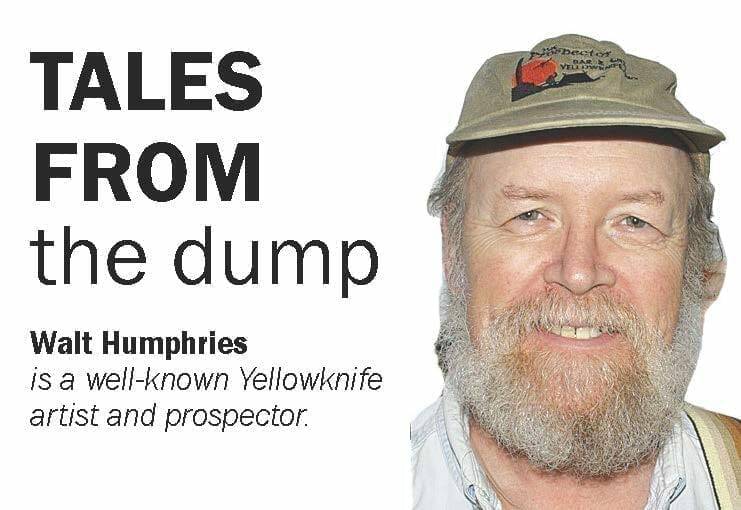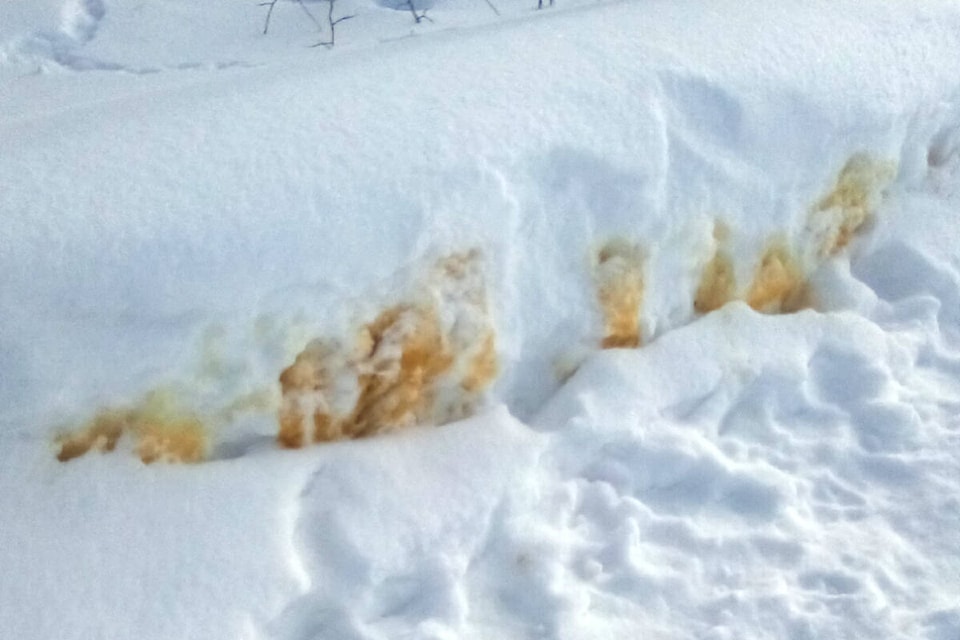Be warned. Some people may find this week’s column to be silly, mildly offensive or “Oh, wow! I never thought of that.” Personally, I am in the “Oh, wow” category.

For some reason this year, the dog peeing spots along our trails and sidewalks seem to be more plentiful, bigger, more colourful, and more noticeable. This may have something to do with the heavy snowfall we have endured and the low temperatures. Maybe there are simply more dogs in town or people out walking them. No one has really done a study to find out why, so I must deal with my own observations.
Imagine that you walk from the hospital to downtown along the Pat McMahon Frame Lake Trail. If you were to try and count all the pee spots, it would be difficult because, along some stretches, they are almost continuous. They range in colour from yellow to orange and from low to the ground to high up along the snowbanks. With the increased sunlight some almost seem fluorescent.
A prospector is theoretically an observant and curious person. Here I was looking at a mineral that wasn’t in any textbook I had ever read but it should be. Geology is a tactile science, where you use all your senses to identify something. So, I took out my mineral identification kit and went to work. Sight, touch, feel, smell and even taste are involved along with a streak plate, magnet, scratch test, weight or specific gravity and melting point.
I identified a mineral that hadn’t been properly identified or described before. A mineral is the crystalline form of one or more elements. That makes this a new mineral and, when you discover one of them, tradition says you get to name it. I toyed with calling it waltite but I am saving that name for something a little more exotic. Pissicilite has a certain ring to it but would probably get rejected as a name, so I chose to call it peecilite.
It is obviously a common mineral in the North, in winter, when there are dogs and other critters around. To understand its distribution you have to understand its source. Most dogs if you take them for a walk, they like to stop and pee, as part of a ritual to mark what they consider their territory. They will mark numerous locations along the way. When another dog comes along, they want to add their own claim to the territory by peeing over the previous marking. Plus they like to add a few spots all of their own.
Along the trail, every day dogs go along marking the trail and over the course of six months of winter that adds up to a lot of pee, until towards spring the whole trail is a mural of markings. I don’t know how many dogs there are in town, but there are lots and they all have to pee. So, over the course of the winter, we have to be dealing with hundreds of gallons of the stuff. The peecilite deposits just keep growing until the big spring melt arrives. For some reason, the government likes to call the spring runoff a Frechette but I would argue it is not all that fresh. Especially close to civilization.
Just consider all that stuff in the spring that melts and becomes part of the runoff into our streams, rivers, ponds, and lakes. There is all the pee and poop, frozen exhaust, litter, and trash. I really think a team of geologists and PhD students should study this. In time I hope peecilite gets inserted into all geology and mineral identification books, with a little footnote saying it was first identified in 2023 in Yellowknife. It could become a winter tourist attraction.
Someone should create a museum for all the different forms of ice and snow. Housed in an arena that is kept cold enough to preserve the samples. It would be a first of its kind.
Imagine a 2,000 lb. sample of peecilite on display. One that has been cored and sampled, so that we know definitively that 104 dogs, four foxes, three humans and two wolves have all contributed to it. That would be a show-stopper. Maybe we should rename it Yellowkniferite.
